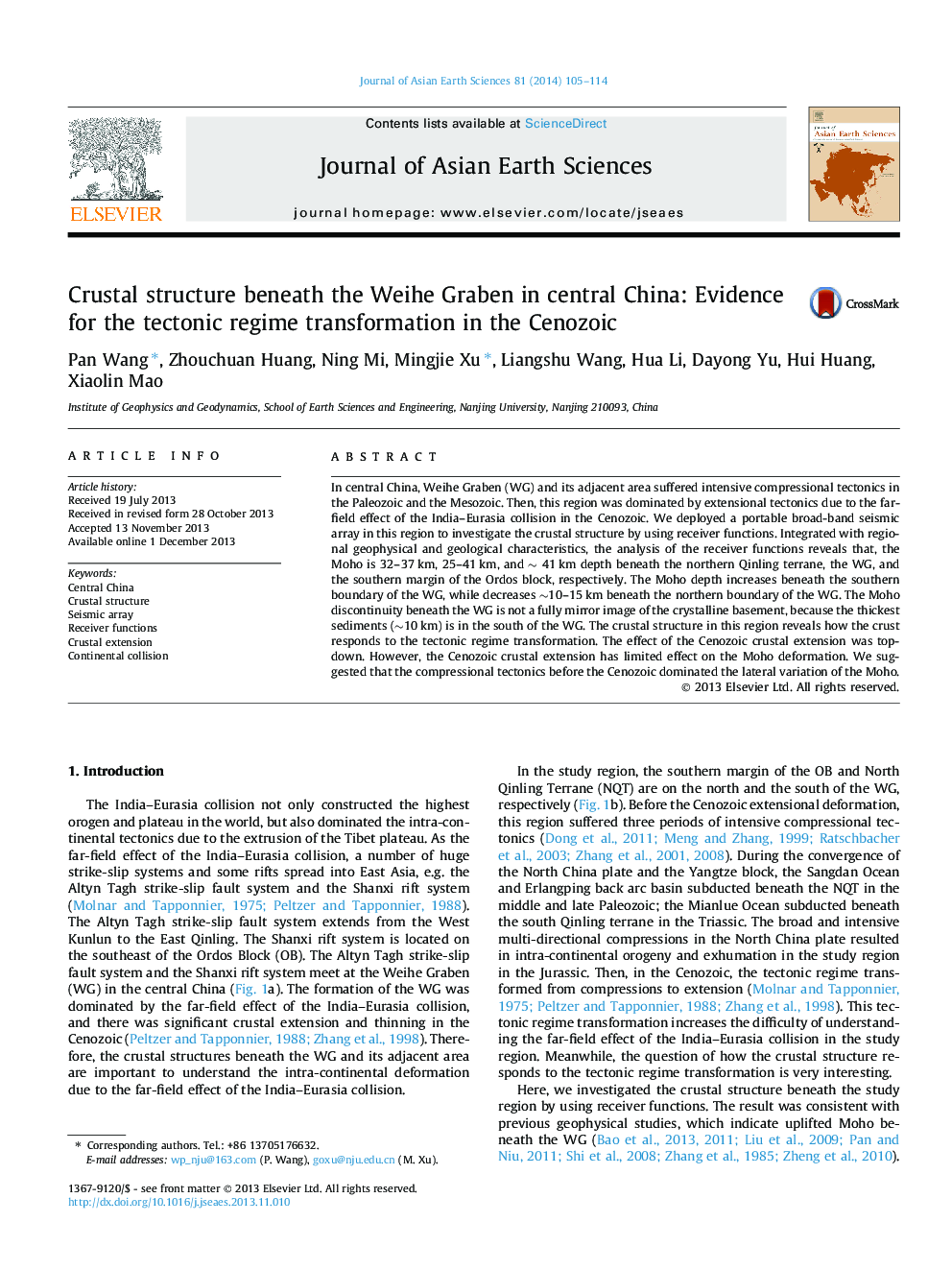| کد مقاله | کد نشریه | سال انتشار | مقاله انگلیسی | نسخه تمام متن |
|---|---|---|---|---|
| 4730820 | 1640387 | 2014 | 10 صفحه PDF | دانلود رایگان |
• Moho uplifts ∼10 km beneath the northern boundary of the Weihe Graben.
• The Moho is not full mirror image of the crystalline basement in the Weihe Graben.
• The India–Eurasia collision has limited effect on the lower crust in the Weihe Graben.
• The Cenozoic extension is top-down in the Weihe Graben.
• The compressional tectonics before the Cenozoic dominated the Moho deformation.
In central China, Weihe Graben (WG) and its adjacent area suffered intensive compressional tectonics in the Paleozoic and the Mesozoic. Then, this region was dominated by extensional tectonics due to the far-field effect of the India–Eurasia collision in the Cenozoic. We deployed a portable broad-band seismic array in this region to investigate the crustal structure by using receiver functions. Integrated with regional geophysical and geological characteristics, the analysis of the receiver functions reveals that, the Moho is 32–37 km, 25–41 km, and ∼ 41 km depth beneath the northern Qinling terrane, the WG, and the southern margin of the Ordos block, respectively. The Moho depth increases beneath the southern boundary of the WG, while decreases ∼10–15 km beneath the northern boundary of the WG. The Moho discontinuity beneath the WG is not a fully mirror image of the crystalline basement, because the thickest sediments (∼10 km) is in the south of the WG. The crustal structure in this region reveals how the crust responds to the tectonic regime transformation. The effect of the Cenozoic crustal extension was top-down. However, the Cenozoic crustal extension has limited effect on the Moho deformation. We suggested that the compressional tectonics before the Cenozoic dominated the lateral variation of the Moho.
Journal: Journal of Asian Earth Sciences - Volume 81, 25 February 2014, Pages 105–114
